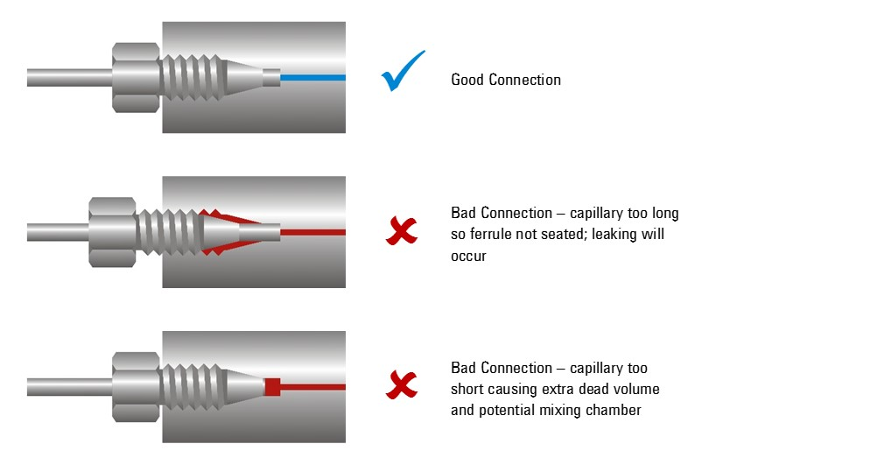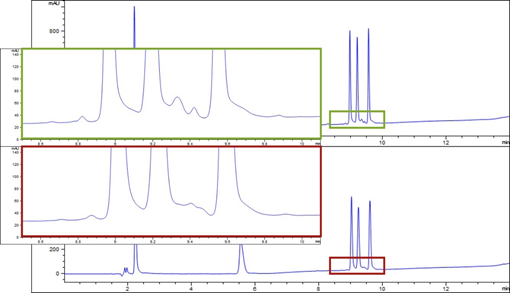Properly fitted connections are key to optimizing separations. This post illustrates the effects of poorly fit connections and suggests resources to help.
Many of us don’t spend much time thinking about the fittings used to plumb our LC, including connecting the column, but this seemingly small detail can cause major headaches if they aren’t correct.
It’s especially important to pay attention to fittings when you’re switching back and forth between different vendor’s LCs, LC columns, or fittings. Many vendors have a slightly different geometry to them, so taking an already-swaged fitting from one LC column to another may not result in a solid connection.
In the figure above, the middle image shows an example of the capillary being too long – sticking out too far past the ferrule. This can lead to leaks as the fitting isn’t tight enough. Sometimes these are obvious enough that they’ll trigger a leak sensor quickly and interrupt your run; other times they’re very slow leaks that are harder to pinpoint. Especially with an organic mobile phase, the solvents may evaporate before triggering a leak sensor.
The bottom image shows a case where the capillary doesn’t extend far enough past the ferrule, creating an empty space between the end of the capillary and the head of the column. This dead-volume or mixing chamber will manifest as tailing, poor resolution, or generally poor peak shape.
Here we have a couple of examples collected by my colleague, Andy, of the effect this extra dead volume can have on separations. In the first example of a single protein, the extra dead volume causes the tailing factor to increase from 0.901 to 1.093.
Uridine; AdvanceBio SEC 4.6 x 150 mm, 300 Å (p/n PL1580-3301); 150 mM phosphate buffer, pH 7.0; 0.35 mL/min
In this second example, with a mixture of peptides on a C18 column, the impact this peak broadening can have is readily apparent as minor peaks begin to disappear!
Peptide mix (Sigma H2016); AdvanceBio Peptide Mapping 2.1 x 150 mm (p/n 653750-902); water/acetonitrile gradient with 0.1% TFA; 0.2 mL/min
Agilent’s InfinityLab Quick Connect fittings are a simple way to ensure a good connection every time, as the fitting is spring-loaded to adjust to the needed capillary length. If you’re creating connections yourself from loose capillaries, fittings, and ferrules, check out pages 43-46 of the LC columns catalog for detailed instructions with illustrations.
Speak soon!
Anne
Keywords: bio columns, liquid chromatography, best practices, tips and tricks, AdvanceBio blog



